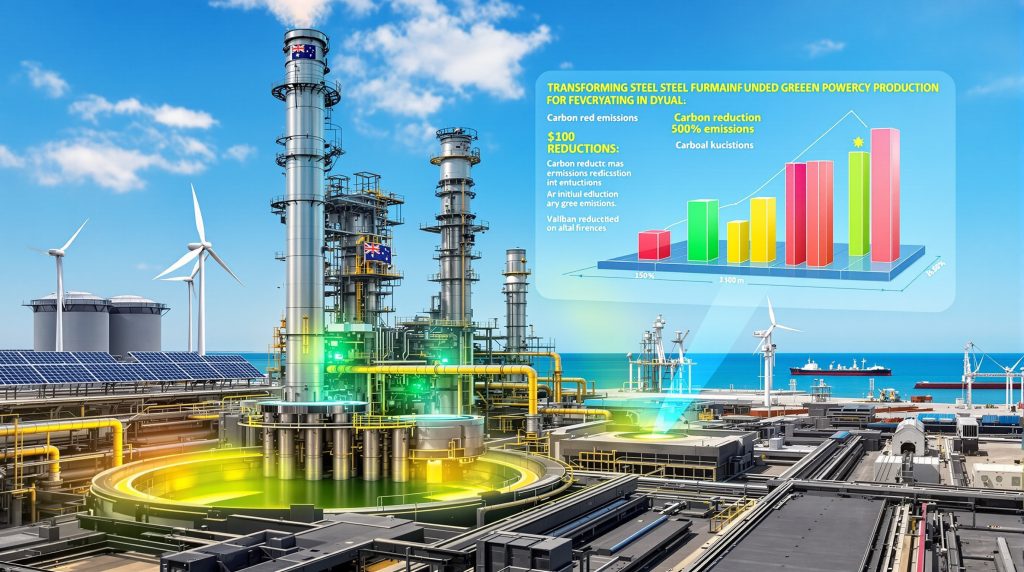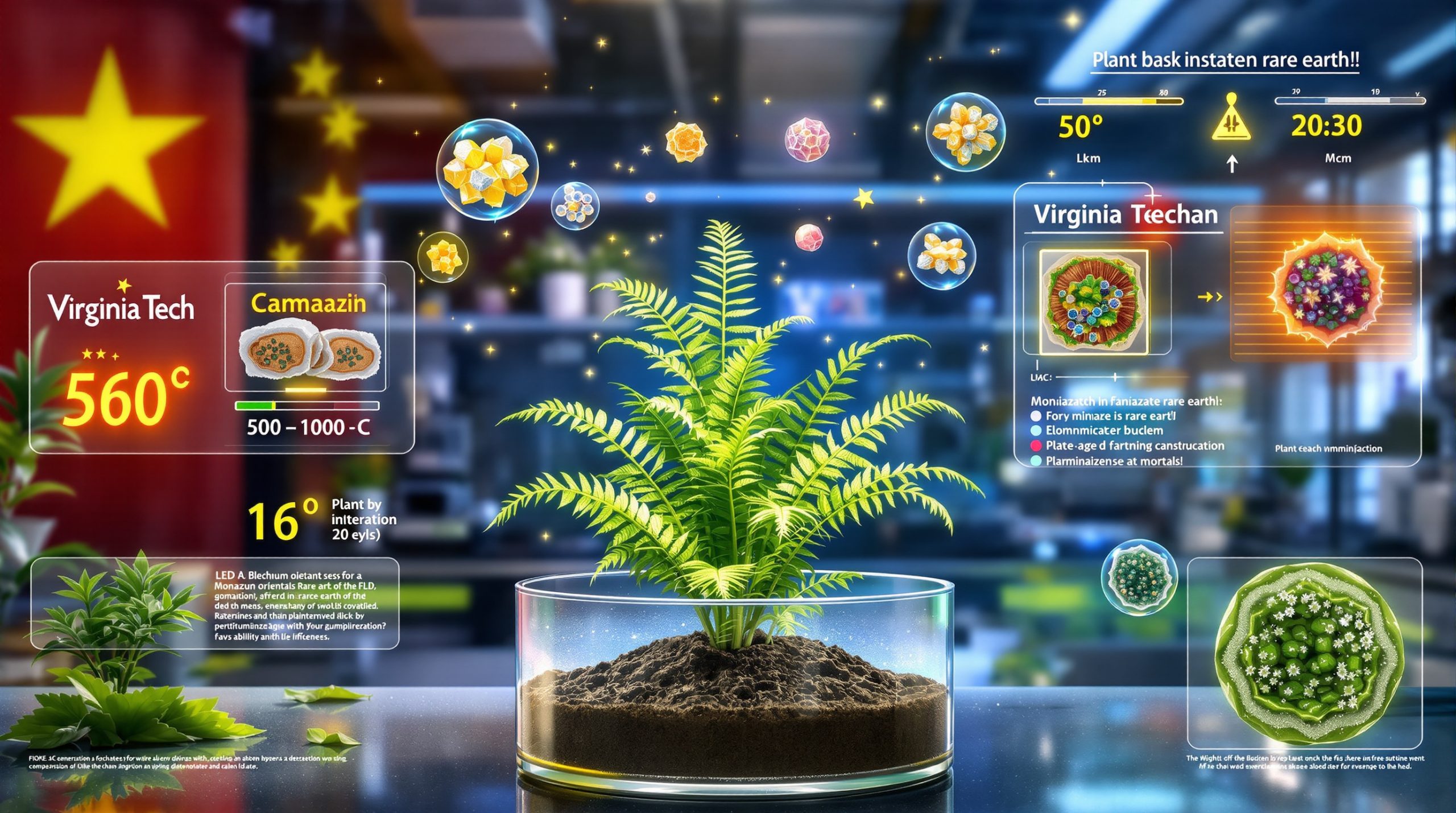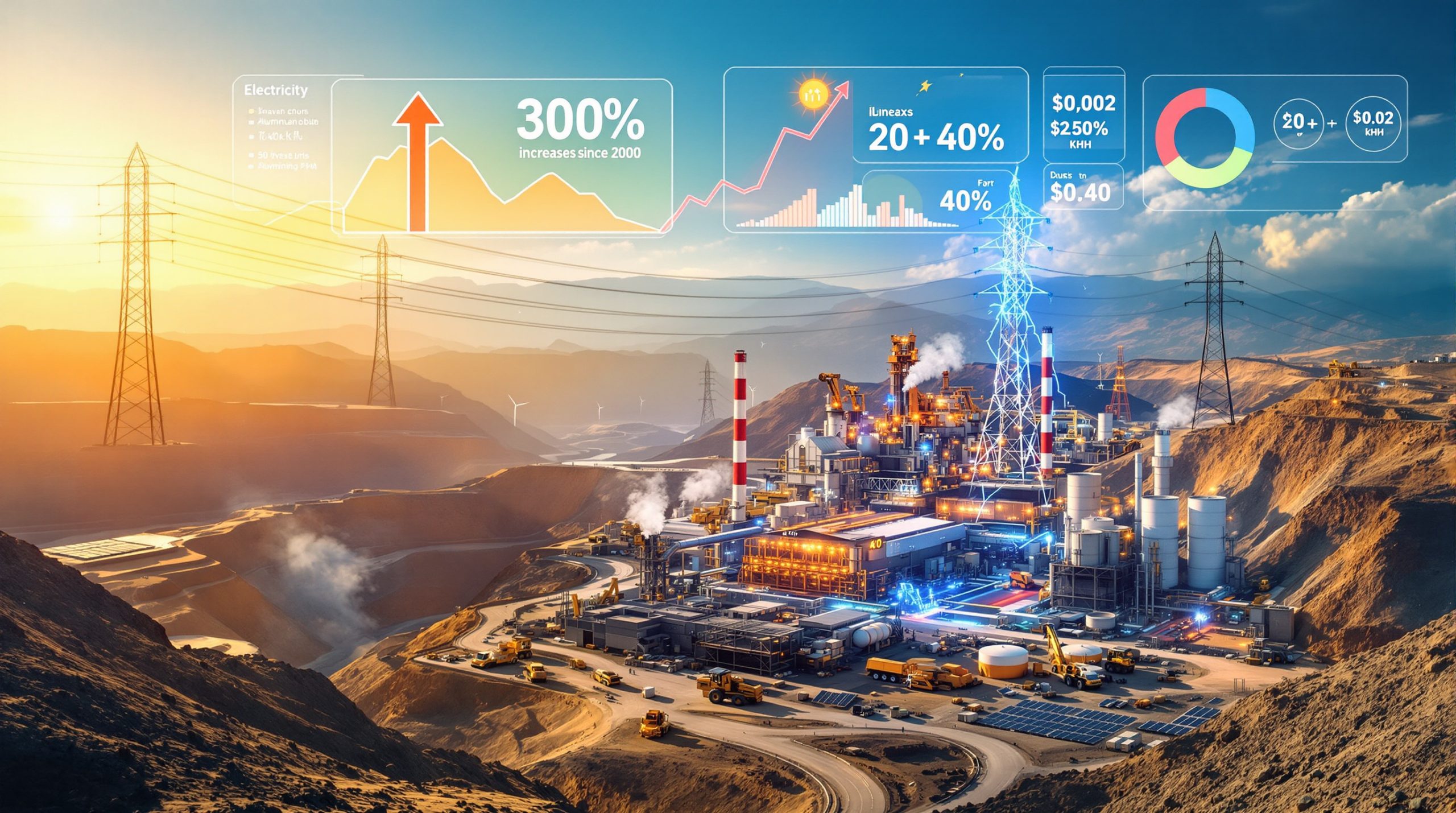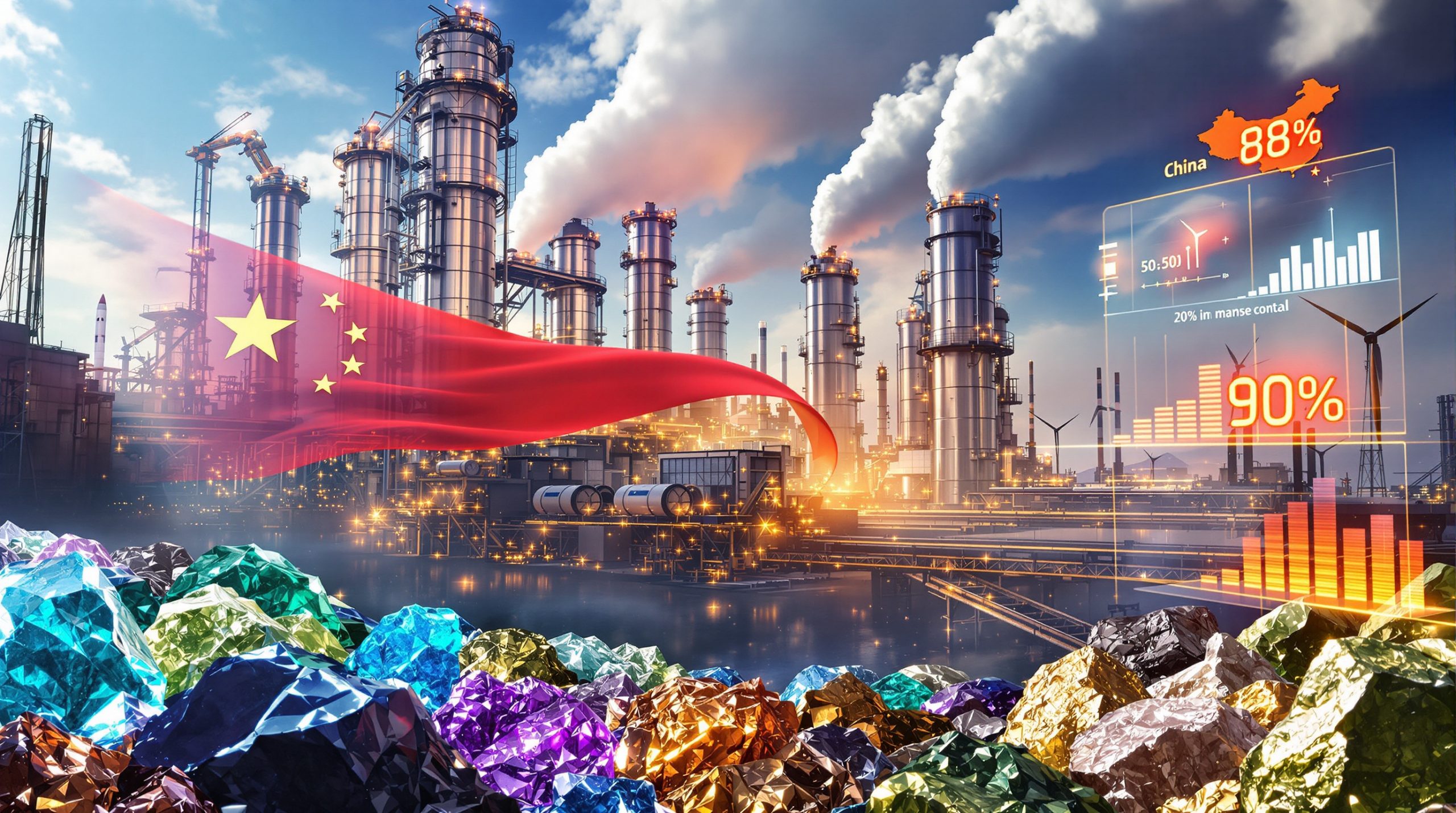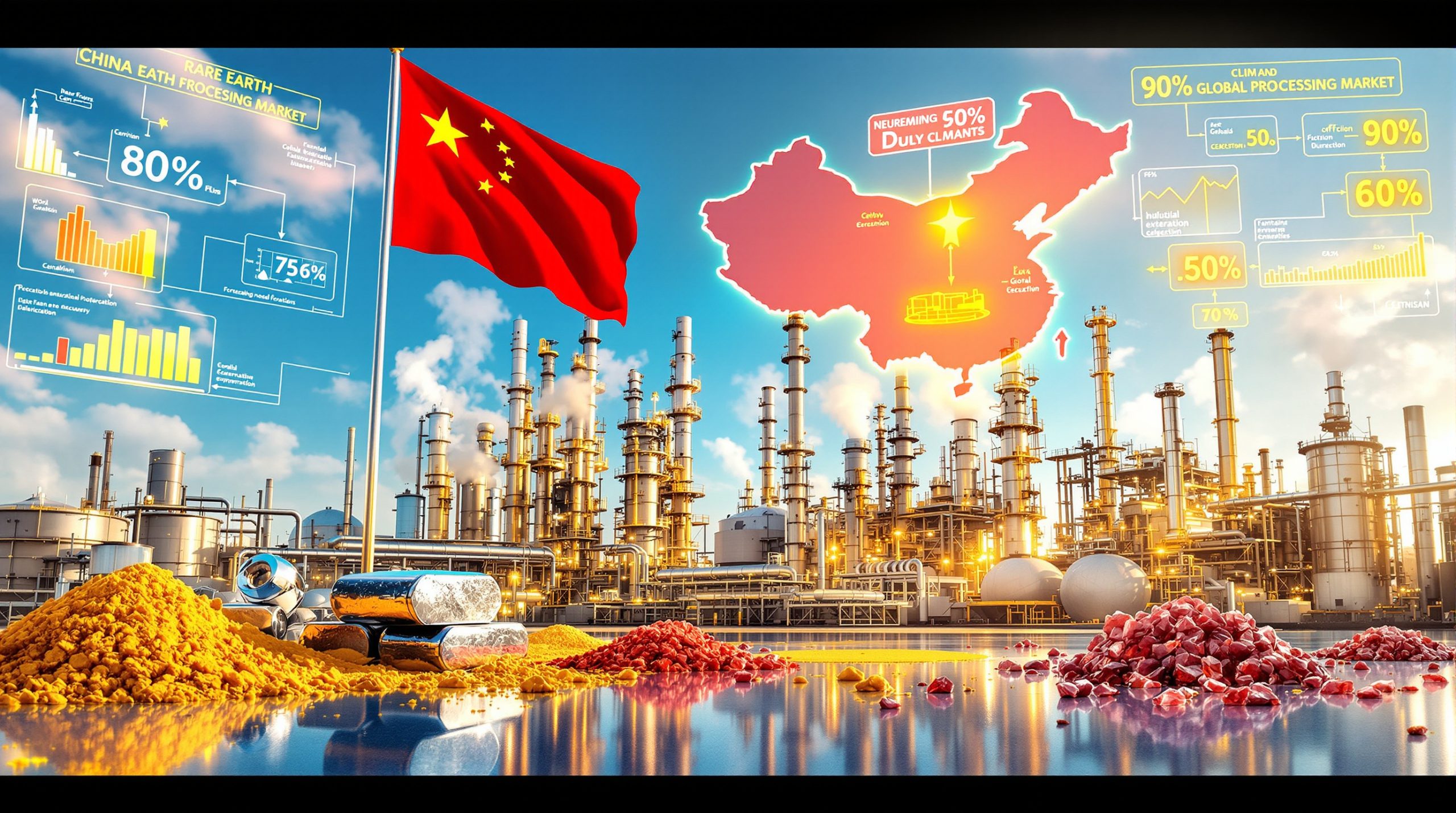What is Green Steel and Why is it Important?
The Environmental Challenge of Traditional Steelmaking
Steel production has long been one of the world's most carbon-intensive industrial processes, generating approximately 7-9% of global CO2 emissions. The conventional steelmaking method relies heavily on coal and coke in blast furnaces, resulting in significant environmental impacts through both direct emissions and substantial energy consumption.
Traditional steelmaking requires temperatures exceeding 1,600°C, primarily achieved through burning coal. This process not only releases greenhouse gases but also produces air pollutants that affect local communities near steel plants.
Defining Green Steel Technology
Green steel represents a revolutionary approach to manufacturing, using processes that substantially reduce or eliminate carbon emissions. These innovative technologies typically replace coal with renewable electricity, natural gas, and eventually green hydrogen as energy sources and reducing agents, potentially cutting emissions by up to 90% compared to conventional methods.
The term encompasses various production pathways, but all share the common goal of decarbonizing the steelmaking process while maintaining or improving product quality and performance characteristics.
Economic and Environmental Benefits
The transition to green steel creates multiple advantages beyond emissions reduction, establishing a compelling business case for transformation:
- Carbon pricing resilience: Reduced vulnerability to carbon pricing mechanisms and border adjustment taxes that are increasingly being implemented globally
- Market access advantages: Enhanced ability to sell to manufacturers who increasingly demand low-carbon materials for their supply chains
- Community health improvements: Significantly reduced air pollution and associated health costs in steel-producing regions
- Long-term cost stability: Greater predictability in operational costs through renewable energy integration, avoiding fossil fuel price volatility
As regulatory frameworks evolve and consumer preferences shift toward sustainable products, green steel producers stand to gain competitive advantages in both domestic and international markets. Furthermore, decarbonisation benefits extend beyond emissions reduction to include economic resilience and new market opportunities.
How is Whyalla Becoming a Green Steel Hub?
Whyalla's Industrial Heritage
Located on South Australia's Eyre Peninsula, Whyalla has been a steelmaking center for decades, with operations dating back to the early 20th century. The city's economy, identity, and workforce have been closely tied to steel production, making the transition to green steel production at Whyalla particularly significant for the region's future.
Originally developed as a shipping port for iron ore from the nearby Middleback Ranges, Whyalla evolved into an integrated steelworks that has weathered numerous economic challenges and ownership changes throughout its history.
The $2.4 Billion Transformation Package
South Australia has committed a substantial $2.4 billion investment package specifically targeting green iron and steel production at Whyalla, as confirmed by Paul Martyn, SA Department for Energy and Mining chief executive at AIMEX 2025. This funding represents one of Australia's most significant industrial decarbonization initiatives and aims to position Whyalla as a global leader in green steel manufacturing.
The investment forms part of a broader strategy to leverage South Australia's natural advantages in renewable energy and mineral resources, creating a sustainable foundation for the steel industry's future in the region.
Renewable Energy Advantages
South Australia offers unique advantages for green steel production that few other locations worldwide can match:
- Leading renewable penetration: SA has achieved among the highest renewable energy penetration rates in the world, regularly reaching over 60% of electricity generation
- Expanding renewable pipeline: A robust development pipeline of 49 renewable projects valued at approximately $19 billion
- Abundant natural resources: Exceptional solar and wind resources providing reliable, low-cost electricity throughout the year
- Existing infrastructure: Well-developed transmission networks connecting to renewable generation zones across the state
The Northern Transmission Line project, highlighted at AIMEX 2025, will further enhance these advantages by improving access to renewable energy for industrial users in the region. These advances align with broader energy transition strategies being implemented across the mining and industrial sectors.
What Technologies Will Drive Whyalla's Green Steel Production?
Electric Arc Furnace Implementation
The cornerstone of Whyalla's transformation involves replacing traditional blast furnaces with electric arc furnaces (EAFs). These advanced systems:
- Use electricity rather than coal as their primary energy source, enabling direct use of renewable power
- Can be powered entirely by renewable energy for near-zero emissions operation
- Process both recycled scrap steel and virgin iron inputs with high efficiency
- Offer greater operational flexibility and reduced startup/shutdown costs compared to blast furnaces
EAFs represent mature technology that has been proven at industrial scale, reducing technical risk while still delivering substantial emissions reductions.
Direct Reduced Iron (DRI) Processing
The green steel strategy incorporates Direct Reduced Iron (DRI) technology, which fundamentally changes how iron ore is converted to metallic iron:
- Produces iron using natural gas initially, with increasing hydrogen blending over time
- Eliminates the need for coking coal in the iron reduction process
- Creates a pathway to eventually use 100% green hydrogen as technology matures
- Produces high-quality iron suitable for premium steel products, maintaining quality specifications
DRI technology is particularly well-suited to Whyalla's high-quality magnetite resources. As Paul Martyn noted at AIMEX 2025, "Whyalla has the potential to become a global hub for green steel, combining our rich magnetite resources with renewable power."
Green Hydrogen Integration Roadmap
The long-term vision for Whyalla includes progressive integration of green hydrogen, following a phased approach:
| Phase | Timeframe | Hydrogen Use | Carbon Reduction |
|---|---|---|---|
| Initial | 2025-2027 | Natural gas with hydrogen blending | 50-60% |
| Transition | 2027-2029 | Majority hydrogen with natural gas backup | 70-80% |
| Final | 2029-2030 | 100% green hydrogen (targeted) | 90-95% |
This staged implementation allows for technological maturation and infrastructure development while still achieving significant emissions reductions from the earliest phases. The advancement of hydrogen-powered trucks in mining operations demonstrates the broader industry shift toward hydrogen-based solutions.
What Infrastructure Developments are Underway?
Manufacturing Facility Upgrades
The transformation includes comprehensive upgrades to existing facilities, modernizing Whyalla's industrial capabilities:
- Renovation of rolling mills and finishing lines to handle hydrogen-reduced iron
- Installation of advanced emissions monitoring systems to validate carbon reduction claims
- Digitalization of production processes for efficiency improvements and quality control
- Enhanced material handling and logistics infrastructure to optimize operations
These upgrades will not only reduce emissions but also improve productivity and product quality, ensuring Whyalla remains competitive in global steel markets.
Supporting Energy Infrastructure
Critical supporting infrastructure developments include several key projects:
- Renewable energy connections: Direct power purchase agreements with wind and solar farms
- Hydrogen production facilities: Electrolyzers powered by renewable energy to produce green hydrogen
- Grid stability solutions: Energy storage systems to manage intermittency in renewable supply
- Water management systems: Advanced recycling and desalination for process optimization
The Northern Water Project, a planned desalination plant mentioned at AIMEX 2025, represents an important component of this supporting infrastructure, ensuring sufficient water supply for industrial processes.
Port and Logistics Enhancements
The project encompasses substantial improvements to transportation infrastructure:
- Port facility upgrades to handle increased export volumes of finished green steel products
- Rail connectivity enhancements for efficient material movement between facilities
- Intermodal transportation hubs for supply chain optimization and reduced logistics costs
- Digital logistics platforms enabling just-in-time material delivery and reduced inventory costs
These logistics improvements will enhance Whyalla's competitiveness by reducing transportation costs and improving supply chain reliability. Such developments represent important industry innovation trends that are reshaping Australia's industrial landscape.
What Economic Benefits Will Green Steel Bring to Whyalla?
Job Creation and Workforce Development
The transition is expected to generate significant employment opportunities throughout the region:
- Construction phase: Thousands of jobs during the multi-year transformation period
- Operational roles: Permanent high-skilled positions in advanced manufacturing
- Supply chain positions: Supporting roles in renewable energy and hydrogen production
- Research opportunities: Development positions in green steel innovation and optimization
Importantly, these jobs represent a transition pathway for existing steelworkers, ensuring skills development keeps pace with technological change.
Supply Chain Development
The project will catalyze growth throughout the regional supply chain, creating opportunities for numerous businesses:
- Local manufacturing of specialized components and equipment for green steel production
- Engineering and technical service providers supporting advanced manufacturing processes
- Maintenance and repair operations for new equipment and systems
- Logistics and transportation services for raw materials and finished products
This ecosystem development extends economic benefits beyond direct employment at the steel plant itself.
Export Market Opportunities
Green steel production positions Whyalla to capture growing international demand for low-carbon materials:
- Premium pricing for certified low-carbon steel products in environmentally conscious markets
- Access to markets with stringent environmental requirements that may restrict high-carbon imports
- Competitive advantage as carbon border adjustments are implemented in major trading regions
- Diversification into high-value specialty steel segments requiring precise quality control
As global markets increasingly prioritize environmental performance, Whyalla's green steel will command both market access and potential price premiums unavailable to conventional producers. This represents a key component of Australia's strategy for electrification & decarbonisation across heavy industries.
How Does Whyalla's Green Steel Compare Globally?
International Green Steel Initiatives
Whyalla's transformation occurs within a global context of steel industry decarbonization, with several major initiatives underway:
| Region | Project | Technology | Timeline | Investment |
|---|---|---|---|---|
| Sweden | HYBRIT | Hydrogen DRI | 2026-2030 | €1.5 billion |
| Germany | H2 Green Steel | Hydrogen DRI/EAF | 2025-2030 | €2.5 billion |
| Spain | ArcelorMittal | Hydrogen DRI | 2025-2028 | €1 billion |
| Australia (Whyalla) | Green Steel | EAF/Hydrogen DRI | 2025-2030 | $2.4 billion |
While several countries are pursuing green steel development, Whyalla's approach combines proven technologies with Australia's unique advantages in renewable energy.
Competitive Advantages
Whyalla's green steel initiative offers several distinct advantages in the global landscape:
- Resource proximity: Close access to high-grade magnetite iron ore resources minimizing transportation costs
- Renewable leadership: World-leading renewable energy penetration and development pipeline
- Policy framework: Strong government policy support and substantial investment commitments
- Existing expertise: Established steel production knowledge and operational infrastructure
These advantages position Whyalla competitively in the race to develop commercially viable green steel at scale.
Technology Transfer Opportunities
The project creates potential for knowledge exchange and technology transfer with other global initiatives:
- Research partnerships with international green steel projects to accelerate innovation
- Collaborative development of hydrogen-based reduction processes and optimization
- Shared learning on renewable energy integration for industrial applications
- Joint standards development for green steel certification and verification
These collaborative opportunities can accelerate technology development while reducing costs and risks for all participants.
What Challenges Must Be Overcome?
Technical Hurdles
Several technical challenges require innovative solutions for successful implementation:
- Hydrogen scale-up: Scaling green hydrogen production to industrial volumes cost-effectively
- Quality consistency: Maintaining consistent product quality through process transitions
- Intermittency management: Developing strategies for operating with variable renewable energy
- Energy efficiency: Optimizing energy consumption throughout the production chain
While these challenges are significant, they represent engineering problems with identifiable solutions rather than fundamental barriers to implementation.
Economic Considerations
The transformation must address several economic factors to ensure long-term viability:
- Capital requirements: Higher initial capital costs compared to conventional technology upgrades
- Competitive pressure: Managing costs while competing with traditional steelmakers in global markets
- Green premium uncertainty: Developing markets where customers will pay more for low-carbon steel
- Investment timing: Balancing technology maturation with market development needs
A phased approach allows for learning and optimization while spreading capital investments over time.
Policy and Regulatory Framework
Success depends on supportive policy environments at multiple levels:
- Carbon pricing: Effective long-term carbon pricing mechanisms to level the competitive field
- Green procurement: Government procurement policies preferencing low-carbon steel products
- Trade policy: International agreements recognizing embodied carbon in steel products
- Investment coordination: Alignment between industry and government investment strategies
South Australia's "one-window" government system, highlighted at AIMEX 2025, represents an important step in streamlining regulatory processes for complex industrial transformations.
What is the Timeline for Whyalla's Green Steel Transformation?
Key Milestones and Phases
The transformation follows a structured implementation plan with distinct phases:
-
Foundation Phase (2025-2026)
- Detailed engineering and site preparation activities
- Initial renewable energy integration through power purchase agreements
- Workforce training and development programs
- Supply chain establishment and partnership development
-
Transition Phase (2026-2028)
- Electric arc furnace commissioning and performance optimization
- Initial DRI plant operation using natural gas as the primary reducing agent
- Progressive hydrogen blending trials at increasing percentages
- First certified green steel product manufacturing and market development
-
Optimization Phase (2028-2030)
- Increased hydrogen utilization approaching 100% for new production
- Full renewable energy integration across all operations
- Production scale-up to commercial volumes with optimized processes
- Export market development and premium pricing strategies
This phased approach allows for learning and adaptation while still maintaining progress toward the ultimate goal of near-zero carbon steel production.
Progress Indicators
Success will be measured against several key performance metrics:
- Carbon intensity: Reduction in tonnes CO2 per tonne of steel produced
- Renewable integration: Percentage of total energy derived from renewable sources
- Hydrogen utilization: Proportion of reduction process using hydrogen rather than natural gas
- Production volume: Quantity of certified green steel manufactured and shipped
Regular reporting against these metrics will provide transparency and accountability throughout the transformation process.
How Will Green Steel Impact Australia's Decarbonization Goals?
Contribution to National Emissions Reduction
The Whyalla green steel initiative will significantly impact Australia's industrial emissions profile:
- Steel production represents approximately 7% of Australia's industrial emissions
- Full implementation could reduce these sector emissions by up to 90%
- Creates a replicable model for other carbon-intensive industries to follow
- Demonstrates viable pathways for hard-to-abate sector decarbonization
As one of Australia's most significant industrial decarbonization projects, Whyalla's transformation will make a material contribution to national climate targets.
Policy Alignment and Support
The project aligns with multiple national policy objectives beyond emissions reduction:
- Net-zero emissions targets and decarbonization roadmaps
- Critical minerals and advanced manufacturing strategies
- Regional development priorities for industrial communities
- Renewable hydrogen industry development and export potential
This policy alignment ensures sustained support across multiple government portfolios and priorities.
International Climate Commitments
Green steel production supports Australia's international climate obligations in several ways:
- Contributing to Paris Agreement nationally determined contributions
- Demonstrating leadership in industrial decarbonization partnerships
- Fulfilling technology transfer commitments to developing economies
- Advancing climate finance initiatives through commercial-scale implementation
By showing that emissions-intensive industries can successfully transition, Australia strengthens its position in international climate negotiations.
What Does the Future Hold for Green Steel at Whyalla?
Expansion Possibilities
The initial transformation creates foundations for future growth and development:
- Increased production capacity as technology matures and costs decline
- Diversification into specialized high-value steel products for growing markets
- Integration with other green manufacturing processes in adjacent industries
- Development of hydrogen export capabilities leveraging production scale
These expansion opportunities represent potential second-phase developments once the initial transformation is complete.
Research and Innovation Hub Potential
Whyalla could emerge as a center for industrial decarbonization research:
- Testing facilities for next-generation reduction technologies and processes
- Collaborative research partnerships with universities and industry groups
- Training center for developing green industrial skills in the workforce
- Demonstration site for integrated renewable energy and industrial systems
This research focus would position Whyalla at the forefront of global industrial transformation.
Community and Regional Transformation
The green steel initiative catalyzes broader regional development beyond the plant itself:
- Diversification of the local economy into supporting industries and services
- Educational and training opportunities for workforce development
- Enhanced environmental outcomes improving quality of life and health
- Improved community resilience and sustainability for future generations
The transformation represents not just a technological change but a comprehensive reimagining of Whyalla's industrial identity and future.
Frequently Asked Questions About Green Steel at Whyalla
What makes steel "green"?
Green steel is produced using processes that substantially reduce or eliminate carbon emissions compared to conventional methods. At Whyalla, this involves replacing coal-based blast furnaces with electric arc furnaces powered by renewable energy and using hydrogen instead of coal for iron ore reduction. The result is steel with a carbon footprint up to 90% lower than traditional production methods.
How much will carbon emissions be reduced?
When fully implemented, the green steel production at Whyalla aims to reduce carbon emissions by 90-95% compared to conventional steelmaking processes. Even in the initial phases using natural gas with hydrogen blending, emissions reductions of 50-60% are anticipated, with progressive improvements as hydrogen usage increases.
Will green steel be more expensive?
Initially, green steel may command a premium price due to higher capital costs and technology development. However, as technologies mature and carbon pricing mechanisms evolve, the cost differential is expected to narrow significantly. Many manufacturers are already willing to pay modest premiums for low-carbon materials to meet their own sustainability targets.
How does renewable energy factor into green steel production?
Renewable energy is essential for truly green steel, powering electric arc furnaces and producing green hydrogen for iron reduction. South Australia's abundant solar and wind resources provide Whyalla with a competitive advantage in this regard. The state's pipeline of 49 renewable projects worth $19 billion will support the energy transition with reliable, low-cost electricity.
What role does hydrogen play in green steelmaking?
Hydrogen replaces coal as the reducing agent in the ironmaking process, removing oxygen from iron ore to produce metallic iron. When produced using renewable electricity (green hydrogen), this eliminates the primary source of carbon emissions in traditional steelmaking. Whyalla's transformation includes a phased approach to hydrogen integration, starting with natural gas blending and progressing to full hydrogen utilization.
Further Exploration
The green steel revolution at Whyalla represents a fascinating intersection of technological innovation, economic transformation, and climate action. As the project develops, it will provide valuable lessons for industrial decarbonization worldwide, potentially establishing a blueprint for how traditional carbon-intensive industries can successfully transition to a low-carbon future.
South Australia's commitment to showcasing its mining and energy advantages, as demonstrated at AIMEX 2025, highlights the state's determination to become a global leader in sustainable resource development. With its unique combination of mineral resources, renewable energy capacity, and supportive policy framework, South Australia is positioning itself at the forefront of the global energy transition.
Ready to Capture the Next Mineral Discovery Opportunity?
Stay ahead of the market with real-time alerts on significant ASX mineral discoveries through Discovery Alert's proprietary Discovery IQ model, which instantly transforms complex mineral data into actionable insights for investors. Explore historic examples of exceptional returns from major mineral discoveries by visiting the Discovery Alert discoveries page today.
